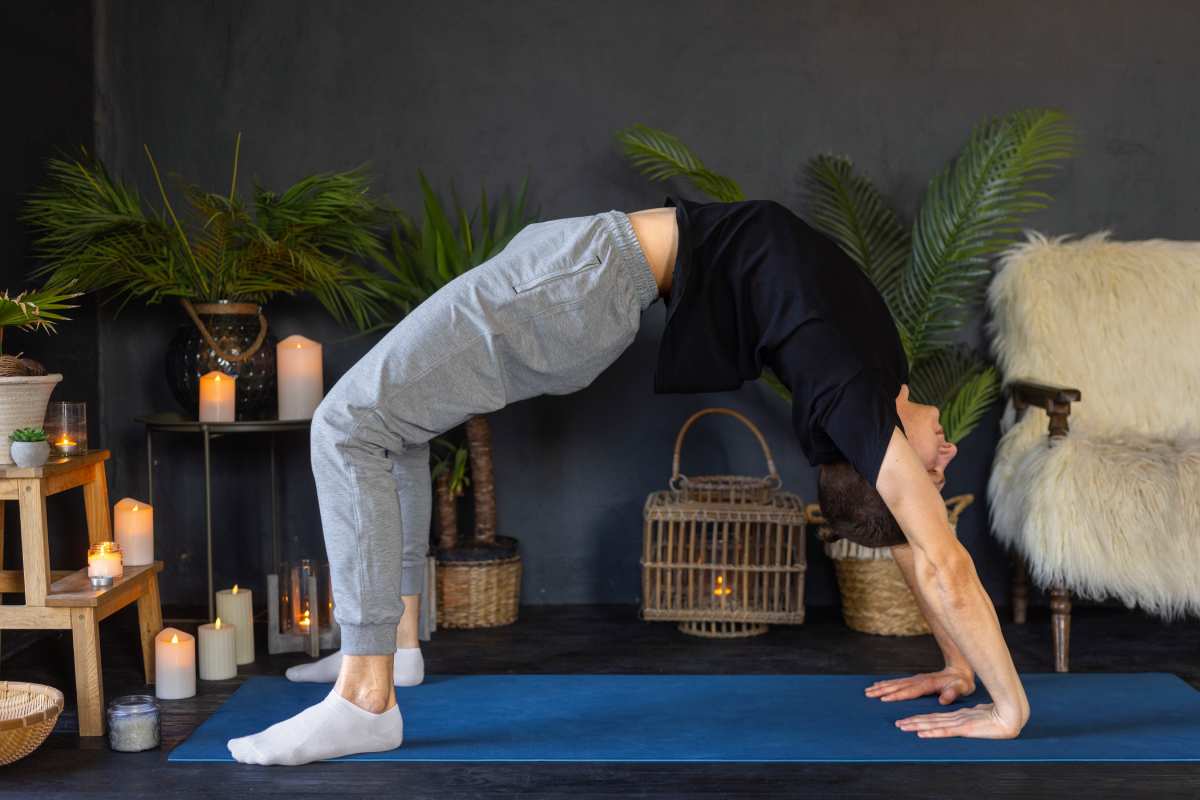In today’s fast-paced world, finding time for self-care often feels like an impossible luxury. Between deadlines, family obligations, and the constant ping of notifications, carving out moments for personal wellness becomes increasingly challenging. Yet, it’s precisely during these hectic periods that our minds and bodies most desperately need attention.
Yoga stands as a time-tested practice that offers remarkable benefits for everyone—from overwhelmed parents and busy professionals to active kids and skeptical first-timers. The beauty of yoga lies in its accessibility; you don’t need expensive equipment, vast spaces, or hours of free time to experience its transformative effects.
This guide explores beginner-friendly yoga poses tailored for diverse groups, with a special focus on how these practices can enhance business relationships and professional performance. Whether you’re a mom stealing five minutes between carpools, an executive seeking mental clarity between meetings, or a parent looking to connect with your children through movement—there’s a yoga practice waiting for you.
The B2B Connection: Understanding Business Value in Personal Practice
Before diving into specific poses, let’s explore how yoga intersects with business-to-business (B2B) concepts and professional life.
What exactly is B2B?
B2B, or business-to-business, refers to commercial transactions between businesses rather than between businesses and consumers. This model involves companies providing services, products, or solutions to other organizations.
Just as B2B relationships thrive on mutual benefit and value exchange, your relationship with yoga offers similar dynamics:
- Investment and Return: Like any B2B solution, yoga requires initial investment (time, some basic equipment) but delivers measurable returns (improved focus, reduced stress, enhanced physical capability)
- Scalable Implementation: Start small with a few minutes daily and scale up as you experience benefits—similar to how businesses test solutions before full deployment
- Relationship Building: Group yoga sessions can strengthen team bonds and create networking opportunities, mirroring how B2B partnerships foster connection
- Data-Driven Results: Track improvements in sleep quality, stress levels, and productivity to quantify yoga’s impact, just as businesses measure ROI
For professionals in B2B environments, yoga offers particularly relevant benefits:
- Enhanced mental clarity for strategic decision-making
- Improved stress management during high-pressure negotiations
- Better posture and physical comfort during long meetings
- Increased energy reserves for demanding workdays
- Improved presence and confidence when presenting to clients
Getting Started: Essential Equipment and Space
One of yoga’s greatest strengths is its minimal requirements. To begin your practice:
Essential Equipment
- Yoga mat: Provides cushioning and grip; invest in a basic mat ($15-30) or use a non-slip rug to start
- Comfortable clothing: Choose breathable fabrics that allow movement
- Props (optional): Yoga blocks ($8-15 for a set) or firm pillows can assist with modifications
- Water bottle: Stay hydrated throughout your practice
Creating Space
You need less room than you might think:
- Home practice: Clear a space slightly larger than your mat; move furniture temporarily if needed
- Office options: A quiet corner or meeting room during lunch breaks
- Outdoor alternatives: Parks, balconies, or patios offer refreshing settings
- Digital access: Many apps and websites offer guided practices for small spaces
Remember: Consistency trumps perfection. Five minutes in a cramped space beats skipping practice entirely.
Core Beginner Poses for All Bodies
The following poses are categorized by audience, but feel free to mix and match based on your interests and needs.
For Busy Parents
1. Child’s Pose (Balasana)
- Benefits: Releases back tension, calms the mind, accessible recovery pose
- How to: Kneel on the floor, touch big toes together, sit back on heels, extend arms forward with forehead resting on the mat
- When to use: Between household tasks, after putting kids to bed, during moments of overwhelm
- Modification: Place a pillow between your calves and hamstrings if knees are uncomfortable
2. Cat-Cow Sequence
- Benefits: Warms up the spine, releases tension, energizes the body
- How to:
- Start on hands and knees in tabletop position
- Inhale: Drop belly toward mat, lift chest and tailbone (Cow)
- Exhale: Round spine toward ceiling, tuck chin (Cat)
- Repeat 5-10 times, moving with breath
- When to use: Morning energy boost, after long periods of sitting, when feeling stiff
3. Legs Up the Wall (Viparita Karani)
- Benefits: Reduces swelling in legs, calms nervous system, promotes relaxation
- How to: Sit with one hip against a wall, swing legs up as you lie back, rest with buttocks near or touching wall and legs extended upward
- When to use: End of day recovery, during insomnia, after long periods of standing
- Duration: Start with 3-5 minutes, gradually increase to 10-15 minutes
For Business Professionals
1. Seated Forward Fold
- Benefits: Stretches back muscles, relieves tension, can be done in office attire
- How to: Sit at edge of chair, feet flat on floor; inhale to lengthen spine, exhale to hinge forward from hips
- When to use: Between meetings, during conference calls (camera off!), email breaks
- Tip: Keep slight bend in knees if hamstrings are tight
2. Chair Yoga Variations
- Benefits: Maintains circulation, reduces stiffness, can be done discreetly
- How to:
- Seated Spinal Twist: Sit tall, place right hand on left knee, left hand behind you, rotate torso left; repeat other side
- Seated Eagle Arms: Extend arms forward, cross right over left, bend elbows, bring palms together if possible; switch sides
- Seated Figure Four: Cross right ankle over left knee, keep foot flexed, gently press right knee down; switch sides
- When to use: During long meetings, while on calls, between tasks
3. Standing Forward Bend (Uttanasana)
- Benefits: Resets posture, stretches entire back body, refreshes mind
- How to: Stand with feet hip-width apart, exhale to hinge at hips, allow upper body to hang toward floor
- When to use: Transition between meetings, after periods of focus, when changing tasks
- Modification: Bend knees generously if lower back is sensitive
For Men New to Yoga
1. Mountain Pose (Tadasana)
- Benefits: Improves posture, builds body awareness, foundation for other poses
- How to: Stand with feet hip-width apart, weight evenly distributed, shoulders relaxed, arms at sides
- Focus on: Engaging core, stacking joints (ankles, knees, hips, shoulders), breath awareness
- Why it works for men: Builds body awareness without complexity, improves athletic stance
2. Warrior I & II (Virabhadrasana)
- Benefits: Builds lower body strength, improves focus, enhances stability
- Warrior I: From Mountain, step one foot back, turn heel down at 45°, bend front knee, raise arms overhead
- Warrior II: From Warrior I, open hips and chest to side, extend arms parallel to floor
- Tip for men: These poses counterbalance desk posture and build functional strength
3. Downward Dog (Adho Mukha Svanasana)
- Benefits: Full-body stretch, strengthens upper body, relieves stress
- How to: From hands and knees, tuck toes, lift knees and hips to form an inverted V-shape
- Modification: Bend knees generously if hamstrings are tight
- Appeal for men: Builds upper body strength while stretching tight areas like hamstrings and shoulders
For Children and Teens
1. Tree Pose (Vrksasana)
- Benefits: Improves balance, concentration, and confidence
- How to: Stand on one leg, place other foot on ankle, calf, or inner thigh (not on knee); hands at heart or overhead
- Make it fun: Pretend to be growing trees, sway gently like branches in the wind
- Group variation: Form a “forest” by standing in a circle, holding hands when in balance
2. Happy Baby (Ananda Balasana)
- Benefits: Releases lower back, playful introduction to stretching
- How to: Lie on back, bring knees toward armpits, grasp outsides of feet, gently rock side to side
- Kid-friendly cue: “Pretend you’re a happy baby playing with your feet!”
- Social element: See who can rock longest without rolling over
3. Partner Poses
- Benefits: Builds trust, encourages communication, makes yoga social
- Double Boat: Sit facing partner, knees bent, hold hands, extend legs to create a “double boat”
- Partner Forward Fold: Sit facing partner with legs extended in V-shape, hold hands and take turns gently pulling forward
- Back-to-Back Chair: Stand back-to-back with partner, walk feet forward while pressing backs together, bend knees to create mutual support
Creating a Sustainable Practice
The key to yoga’s benefits isn’t perfection—it’s consistency. Here’s how to build a practice that lasts:
Quick Sequences for Busy Schedules
Morning Energizer (5 minutes):
- Cat-Cow (10 breaths)
- Downward Dog (5 breaths)
- Standing Forward Bend (5 breaths)
- Mountain Pose with arms raised (5 breaths)
- Chair Pose (3 breaths)
Midday Reset (3 minutes):
- Seated spinal twists (3 breaths each side)
- Seated forward fold (5 breaths)
- Neck stretches (3 breaths each direction)
Evening Wind-Down (7 minutes):
- Child’s Pose (10 breaths)
- Gentle supine twist (5 breaths each side)
- Happy Baby (5 breaths)
- Legs Up the Wall (1-2 minutes)
Habit Stacking Strategies
Connect yoga to existing routines:
- Practice Cat-Cow while waiting for the coffee to brew
- Do Chair Yoga during conference calls
- Try Legs Up the Wall while watching the evening news
- Incorporate Tree Pose while brushing teeth
Family and Team Practice Opportunities
For Families:
- Weekend “yoga breakfast” with simple poses before meals
- “Goodnight yoga” as part of bedtime routine
- Movement breaks during homework sessions
For Work Teams:
- Start meetings with 60 seconds of stretching
- Implement “Wellness Wednesdays” with guided sessions
- Create friendly challenges for consistent practice
Expert Tips for Success
Common Beginner Mistakes to Avoid
- Holding breath: Remember to breathe continuously through poses
- Pushing too hard: Discomfort is normal, and pain is not
- Comparing yourself: Your body has unique needs and capabilities
- Inconsistent practice: Short, regular sessions trump occasional long ones
- Skipping relaxation: Final relaxation is essential, not optional
Modifications for Different Bodies
- Limited mobility: Use chairs, walls, or props for support
- Pregnancy: Avoid deep twists and lying on your belly; use a wider stance for balance
- Larger bodies: Create space by widening stance and using props
- Joint sensitivity: Focus on gentle movement and proper alignment
When to Seek Guidance
Consider professional instruction when:
- You have existing injuries or health conditions
- You want to progress beyond basic poses
- You’re not seeing improvement in problem areas
- You need accountability to maintain practice
Conclusion
Yoga’s ancient wisdom offers modern solutions for everyone—from stressed executives to active children. By starting with these accessible poses and creating consistent, manageable practices, you’ll discover benefits that extend far beyond physical flexibility.
The business value of yoga emerges through improved focus, enhanced resilience, and better relationship-building capabilities. Just as B2B relationships thrive on consistent value exchange and growth, your relationship with yoga will deepen and evolve.
Begin today with just one pose. Notice how it feels. Return tomorrow for another moment of practice. The journey of a thousand breaths begins with a single inhale.
Remember: The most important yoga pose is the one you actually do. Start where you are, use what you have, and do what you can.




